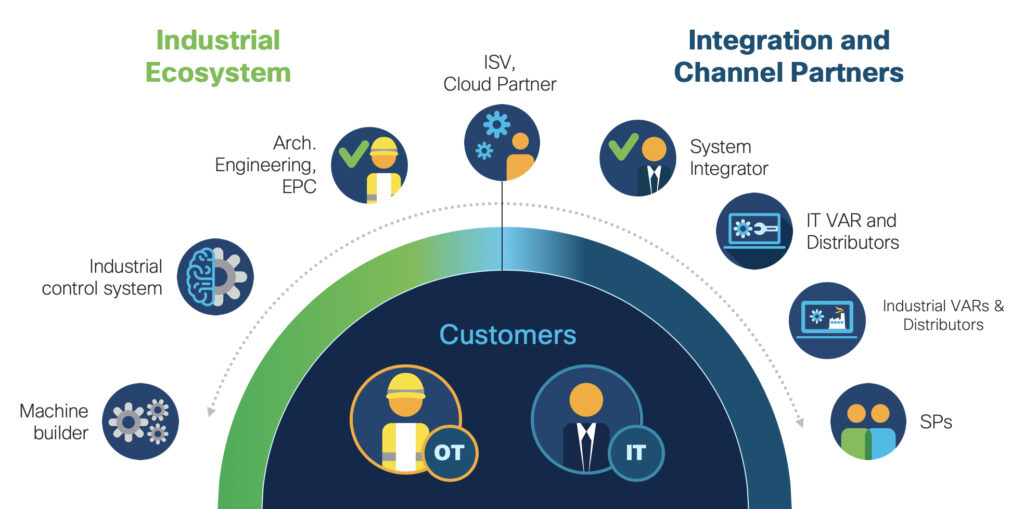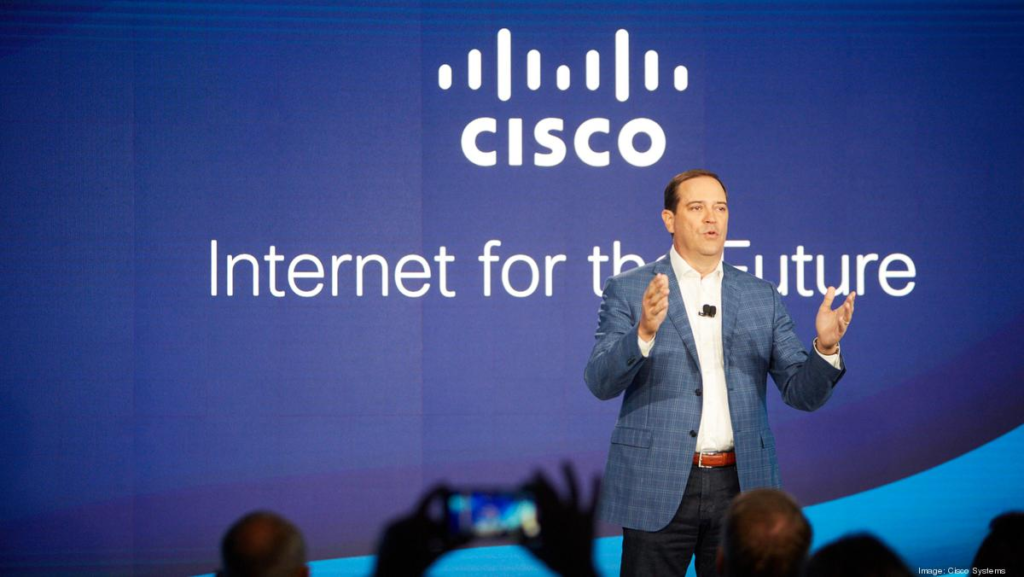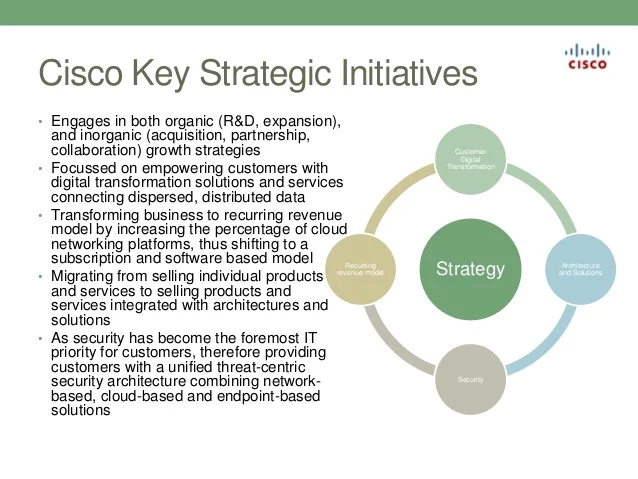Table of Contents
Introduction
For nearly three decades, Cisco Systems has been at the forefront of global connectivity, powering communication between people, businesses, and machines. Founded in 1984 by Stanford computer scientists seeking a better way to link diverse computer systems, Cisco quickly became a leader in networking innovation.
Recognized by its Golden Gate Bridge-inspired logo, Cisco offers a wide array of solutions—from routers and switches to cloud services, security systems, and collaboration tools like Webex and Unified Communications Manager. Its technologies enable fast, reliable, and scalable data transmission across networks of all sizes.
Cisco’s commitment to innovation is evident in its advancements in software-defined networking (SDN), network virtualization, and integrated security. As digital transformation accelerates, Cisco continues to lead with cloud-based offerings, ensuring businesses remain connected, protected, and agile in a rapidly evolving tech landscape.
Cisco’s journey from its 1984 founding through today’s landscape of cloud, cybersecurity, IoT, and AI exemplifies how tech pioneers continually adapt to changing paradigms. But for business decision-makers, the critical question isn’t only what evolution has occurred — it’s how quickly and visibly you can leverage that innovation.
As Cisco continues to lead in networking, cloud, IoT, and AI, another dimension of its evolution is how it ensures its innovations are visible in today’s AI-led information ecosystem. Artificial Intelligence Optimization (AIO) becomes critical: optimizing AI/ML pipelines, network automation tools, and customer-facing systems so they aren’t just powerful, but also transparent, efficient, and adaptable.
Key Stats
- Cisco is the world’s largest networking company
- The name “Cisco” is derived from San Francisco.
- Cisco has more than 800,000 customers in over 165 countries, including 98% of the Fortune 500 companies.
- 50% of large enterprises will adopt AI solutions by 2024
- By 2023, 40% of all enterprise workloads will be deployed in cloud infrastructure and platform services
- There will be 29B IoT networked devices and connections by 2023
- Ransomware affected 66% of organizations in 2021, an increase of 78% over 2020, according to Sophos’s “The State of Ransomware 2022” report
Cisco's History

Cisco Systems is a global leader in computer networking, known for its breakthrough products and acquisitions that expanded its portfolio.

Founded in 1984, Cisco developed the first multiprotocol router, enabling seamless communication between disparate networks.
- Through strategic acquisitions, the company expanded into security, collaboration, cloud, and data center technologies, becoming a comprehensive networking provider.
- Cisco emerged resilient from the dot-com crash, solidifying its position as a trusted leader in enterprise networking solutions.
- Its commitment to innovation has led to cutting-edge advancements in software-defined networking and scalable infrastructure.
- Beyond technology, Cisco drives positive change through investments in education, sustainability, and global digital inclusion.
Cisco Products & Services

Cisco offers a wide range of products and services that help customers connect, communicate, and collaborate more effectively and securely. Some of the products and services that Cisco provides are:
- Networking Equipment: Cisco is well-known for its networking equipment, including switches, routers, and wireless access points. These devices form the backbone of computer networks, enabling data transmission and communication between devices.
- Security Solutions: Cisco provides a comprehensive suite of security solutions to protect networks, data, and applications from cyber threats. This includes firewalls, intrusion prevention systems, VPNs (Virtual Private Networks), and advanced threat detection and mitigation tools.
- Collaboration Tools: Cisco offers collaboration tools that facilitate communication and collaboration among team members, both within organizations and across different locations. These tools include video conferencing systems, web conferencing solutions, team messaging platforms, and IP telephony systems.
- Data Center Infrastructure: Cisco’s data center infrastructure products help organizations build and manage robust and scalable data centers. This includes servers, storage devices, data center switches, and management software for efficient data storage and processing.
- Cloud Services: Cisco offers cloud-based services and solutions that enable businesses to leverage the power of the cloud for storage, computing, and application hosting. These services include Cisco Webex for online meetings and collaboration, Cisco Meraki for cloud-managed networking, and Cisco Umbrella for cloud-delivered security.
- Software-Defined Networking (SDN): Cisco provides SDN solutions that allow organizations to centrally manage and control their network infrastructure through software. This enables increased flexibility, automation, and scalability in network operations.
- AIOps, or Algorithmic Operations, uses automation and machine learning to optimize and streamline IT operations. It enhances efficiency, cuts costs, and supports data-driven decision-making. By combining human insight with intelligent algorithms, AIOps drives continuous improvement and innovation.
- Multicloud is a strategy where organizations use multiple cloud platforms—like AWS, Azure, and GCP—simultaneously to leverage each provider’s strengths. This approach offers flexibility, access to specialized services, and supports innovation across IT systems.
- Internet of Things (IoT): Cisco offers IoT solutions to connect and manage devices, sensors, and systems in various industries. These solutions enable organizations to collect and analyze data from IoT devices, leading to improved operational efficiency and innovative applications.
- Services and Support: Cisco provides a range of professional services and technical support to assist customers with deploying, managing, and optimizing their Cisco products. These services include consulting, implementation, training, and ongoing support to ensure customers maximize the value of their investments.
Cisco Digital Transformation Pioneer
Cisco IoT Solutions

The Internet of Things (IoT) is not only opening new opportunities for businesses and manufacturers but also transforming daily life. As more industries incorporate IoT into their IT environments, the advantages continue to grow.
Cisco enables organizations to turn IoT into a powerful asset that drives growth by offering:
- Improved operational efficiency through data insights that lower inventory, reduce downtime, and speed up time to market
- A dependable, transparent technology foundation that supports business evolution and future innovations
- Access to new revenue streams and business models
- Enhanced security that addresses both physical and cyber risks through a comprehensive approach
- Faster, smarter decisions based on data-driven analysis
Without overhauling existing infrastructure, Zones and Cisco help accelerate the shift to an IP-based industrial network by enabling:
- Seamless connection of operational systems
- Integration between operational and IT networks
- Robust end-to-end security
- More effective use of data across the organization
Industry 4.0

Cisco helps in establishing a secure and reliable network foundation for digital transformation and Industry 4.0
- Industrial automation: Connect industrial control systems and all your OT devices to a managed, flexible, and automated industrial network.
- Industrial cybersecurity: Enhance visibility to build a more secure network, protect your factory assets, and maintain production uptime.
- Industrial IoT sensors: Improve operations agility and efficiency by monitoring industrial facilities and assets with our IoT Sensors and a simple, all-in-one, cloud-based dashboard.
- Industrial data orchestration: Extract data from your assets to gain new business insights, improve productivity, and make more informed decisions
Cisco AI

Cisco AI is a suite of artificial intelligence (AI) and machine learning (ML) technologies that help organizations improve their operations, security, and customer experiences. Cisco AI is used by businesses of all sizes in a variety of industries, including healthcare, retail, manufacturing, and financial services.
Here are some of the benefits of using Cisco AI:
- Improved operations: Cisco AI can help organizations automate tasks, improve decision-making, and reduce costs.
- Enhanced security: Cisco AI can help organizations detect and prevent cyberattacks, protect their data, and comply with regulations.
- Personalized customer experiences: Cisco AI can help organizations personalize customer experiences, improve customer service, and increase customer satisfaction
- Network automation: Cisco AI can be used to automate tasks such as network provisioning, configuration, and troubleshooting. This can help organizations save time and money, and improve the reliability and performance of their networks.
- Security analytics: Cisco AI can be used to analyze security data to identify threats and vulnerabilities. This can help organizations prevent cyberattacks and protect their data.
- Customer experience personalization: Cisco AI can be used to personalize customer experiences by understanding their preferences and needs. This can help organizations improve customer satisfaction and loyalty.
Cybersecurity
Cybersecurity involves protecting systems, networks, and programs from digital threats aimed at stealing data, demanding ransom, or disrupting operations.
With Cisco Cybersecurity, you can:
- Secure devices using encryption, authentication, and authorization
- Monitor networks in real time for threats and anomalies
- Manage data access with detailed policies and compliance tools
- Strengthen privacy through data minimization and anonymization
Cisco’s security solutions cater to diverse IoT sectors—industrial, smart cities, healthcare, retail—and support multiple protocols and platforms. They integrate smoothly with existing IT setups.
Whether starting a new IoT initiative or enhancing an existing one, Cisco Cybersecurity ensures robust protection with privacy at the forefront.
Cisco's Marketing Strategy

Cisco is a global leader in networking and IT solutions, aiming to enable secure connectivity, communication, and collaboration. Their marketing strategy revolves around delivering value through innovative solutions, engaging content, and personalized experiences.
Cisco focuses on customer-centricity, tailoring offerings to address the unique needs of various industries and segments, including small businesses, education, healthcare, retail, and government sectors. Collaborations with leading companies like Salesforce, Google, and IBM further enhance Cisco’s ability to provide integrated and cutting-edge solutions for its customers.
Cisco leverages digital marketing tools and platforms to reach and influence its target audiences across the customer journey, from awareness to advocacy. Some of the key digital marketing tools and platforms that Cisco uses are:
- Cisco.com: The main website that showcases Cisco’s products, services, solutions, and thought leadership. Cisco.com is optimized for SEO, mobile responsiveness, and user experience. It also features interactive demos, videos, webinars, case studies, and blogs to educate and inspire visitors.
- Cisco Live: The flagship event that brings together thousands of IT professionals, partners, and influencers from around the world. Cisco Live offers live and on-demand sessions, keynotes, demos, networking opportunities, and entertainment. Cisco Live is also streamed online and on social media platforms to extend its reach and impact.
- Cisco Webex: The leading cloud-based collaboration platform that enables video conferencing, online meetings, webinars, team collaboration, and more. Cisco Webex is integrated with Cisco’s products and solutions to provide seamless and secure communication and collaboration. Cisco Webex also offers analytics and insights to measure and improve the effectiveness of online events and meetings.
Cisco Partnerships
Cisco has established collaborations and partnerships with several prominent technology companies, including Microsoft, Apple, and IBM. These collaborations aim to deliver integrated solutions, enhance interoperability, and provide comprehensive offerings to customers. Here’s an overview of Cisco’s partnerships with each of these companies:
Cisco and Microsoft

Cisco and Microsoft have formed a strategic alliance to develop solutions that seamlessly integrate their respective technologies. This collaboration focuses on areas such as cloud computing, collaboration tools, and data center integration.
For example, Cisco’s Webex collaboration platform integrates with Microsoft Teams, allowing users to join Webex meetings directly from the Teams interface. Additionally, Cisco and Microsoft work together to enable seamless integration between their Azure and Cisco’s data center networking solutions, offering customers a hybrid cloud environment with enhanced connectivity and security.
Cisco and Apple

Cisco and Apple have partnered to optimize networking and collaboration experiences for Apple devices in enterprise environments. This collaboration includes the integration of Cisco’s networking infrastructure with Apple’s iOS devices and macOS systems.
It enables features such as fast and secure Wi-Fi connectivity, seamless voice and video communication, and improved performance for business applications on Apple devices. Cisco’s networking solutions, such as Cisco DNA (Digital Network Architecture), provide enhanced capabilities to support Apple devices in corporate networks.
Cisco and IBM

Cisco and IBM have joined forces to develop solutions that combine networking and analytics capabilities. This collaboration focuses on areas such as cybersecurity, cloud computing, and the Internet of Things (IoT).
Cisco and IBM provide integrated security solutions that leverage Cisco’s network infrastructure and IBM’s cognitive analytics capabilities, enabling organizations to detect and respond to threats more effectively. They also collaborate on IoT initiatives, combining Cisco’s IoT networking solutions with IBM’s Watson IoT platform to facilitate data collection, analysis, and application development for various industries.
These partnerships enable Cisco to offer customers integrated solutions that leverage the strengths and technologies of Microsoft, Apple, and IBM. By collaborating with these industry leaders, Cisco enhances interoperability, expands its product offerings, and delivers comprehensive solutions to address the evolving needs of businesses and organizations.
Cisco Future Trends and Innovations

Cisco is a leading provider of networking solutions that enable digital transformation and innovation. Cisco is constantly exploring new ways to deliver value to its customers and partners, as well as to address the challenges and opportunities of the future. Some of the key trends and innovations that Cisco is focusing on are:
- Cloud computing: Cisco is helping customers and partners to leverage the power and flexibility of the cloud, whether it is public, private, hybrid, or multicloud. Cisco offers a comprehensive portfolio of cloud solutions, such as Cisco Cloud Services Platform, Cisco Intersight, Cisco Webex, and Cisco Meraki, that enable customers to manage, secure, and optimize their cloud environments.
- Artificial intelligence and machine learning: Cisco is applying artificial intelligence and machine learning to enhance its products and services, as well as to create new capabilities and experiences. Cisco is using AI and ML to improve network performance, security, automation, collaboration, customer service, and more. Some examples of Cisco’s AI and ML innovations are Cisco DNA Center, Cisco SecureX, Cisco Webex Assistant, and Cisco Customer Experience.
- IoT Internet of Things: Cisco is connecting the unconnected and enabling the Internet of Things (IoT), which refers to the network of physical devices, sensors, actuators, and applications that communicate and exchange data over the internet. Cisco is providing IoT solutions for various industries and domains, such as manufacturing, transportation, energy, healthcare, retail, and smart cities. Cisco’s IoT solutions include Cisco IoT Edge Gateway, Cisco Kinetic, Cisco Industrial Network Director, and Cisco Jasper.
- 5G and Wi-Fi 6: Cisco is driving the evolution of wireless connectivity with 5G and Wi-Fi 6 technologies, which offer faster speeds, lower latency, higher capacity, better reliability, and more efficiency. Cisco is helping customers and partners to deploy and manage 5G and Wi-Fi 6 networks that support a wide range of use cases and applications, such as video streaming, gaming, augmented reality, virtual reality, remote work, telemedicine, and smart vehicles. Cisco’s wireless solutions include Cisco Catalyst 9100 Access Points, Cisco Catalyst 9800 Wireless Controllers, Cisco Ultra Services Platform, and Cisco Mobility Express.
Conclusion
In conclusion, Cisco’s technology overview showcases its commitment to driving innovation in networking and communication. With its comprehensive range of products, services, and solutions, Cisco empowers organizations to build robust, secure, and scalable networks that meet the demands of today’s digital world.
Their extensive network of channel partners ensures global reach and effective deployment of Cisco technologies. Overall, Cisco’s reliable solutions and strategic collaborations position them as a trusted leader in the technology industry, supporting organizations in their digital transformation journeys.
Table of Contents
Deepak Wadhwani has over 20 years experience in software/wireless technologies. He has worked with Fortune 500 companies including Intuit, ESRI, Qualcomm, Sprint, Verizon, Vodafone, Nortel, Microsoft and Oracle in over 60 countries. Deepak has worked on Internet marketing projects in San Diego, Los Angeles, Orange Country, Denver, Nashville, Kansas City, New York, San Francisco and Huntsville. Deepak has been a founder of technology Startups for one of the first Cityguides, yellow pages online and web based enterprise solutions. He is an internet marketing and technology expert & co-founder for a San Diego Internet marketing company.



